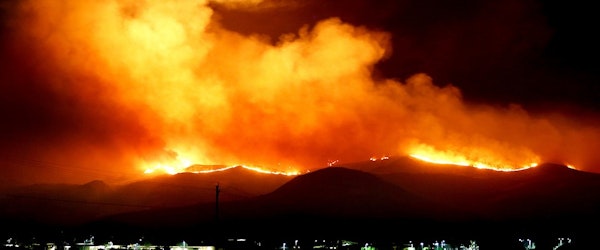
US Natural Disasters Push Insured Losses to $80 Billion in First Half of 2025
Tuesday, July 29th, 2025 Catastrophe Insurance Industry Property Risk ManagementIn the first half of 2025, insured losses from natural disasters surged to $80 billion worldwide, up from $64 billion during the same period in 2024, according to Munich Re’s latest report. The increase was largely attributed to extreme weather events in the United States, including record-setting wildfires in the Los Angeles area and multiple severe convective storm outbreaks across several months. The report emphasizes that while global economic losses dropped slightly to $131 billion, insured losses remain significantly above long-term historical averages.
The Los Angeles wildfires alone were responsible for approximately $40 billion in insured losses and $53 billion in total damages, making it the costliest natural disaster of H1 2025. Remarkably, the fires occurred in January—typically part of Southern California’s rainy season—following a prolonged dry period that left highly flammable vegetation across the region. Munich Re noted that weather disasters accounted for 98% of global insured losses, with earthquakes comprising the remaining 2%.
Other significant insured loss drivers in the U.S. included a series of powerful thunderstorms and tornado outbreaks in March, April, and May. These severe weather events contributed roughly $14.6 billion in insured losses out of a $19 billion total. Elsewhere, notable catastrophes included earthquakes in Myanmar and Taiwan, a devastating landslide in Switzerland, and flooding from Cyclone Alfred in Australia. Despite multiple weather events across Europe, the continent’s losses remained below the previous year’s figures.
Munich Re stressed the growing role of climate change in intensifying natural disaster risks, particularly wildfires and severe weather patterns. Company leadership emphasized the need for adaptive infrastructure and smarter zoning policies to reduce future exposure, warning that high-risk development in vulnerable areas could lead to even higher losses—and premiums—if preventative measures are not adopted.





